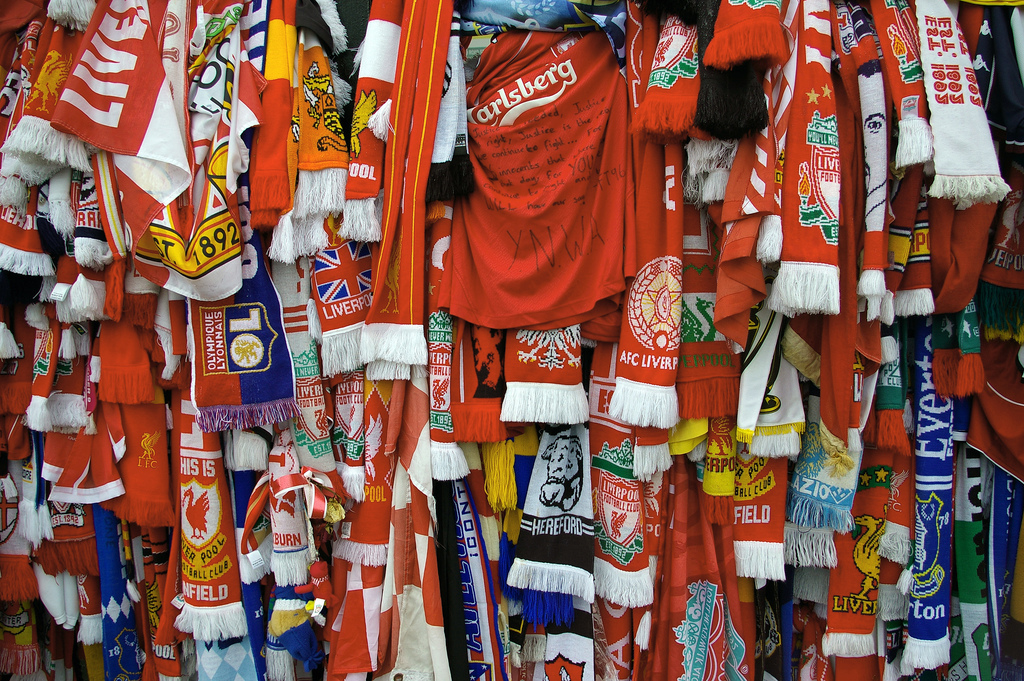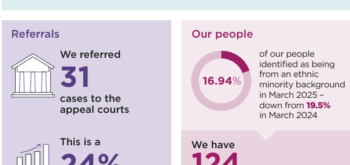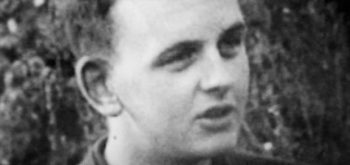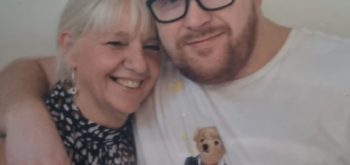[contextly_auto_sidebar]
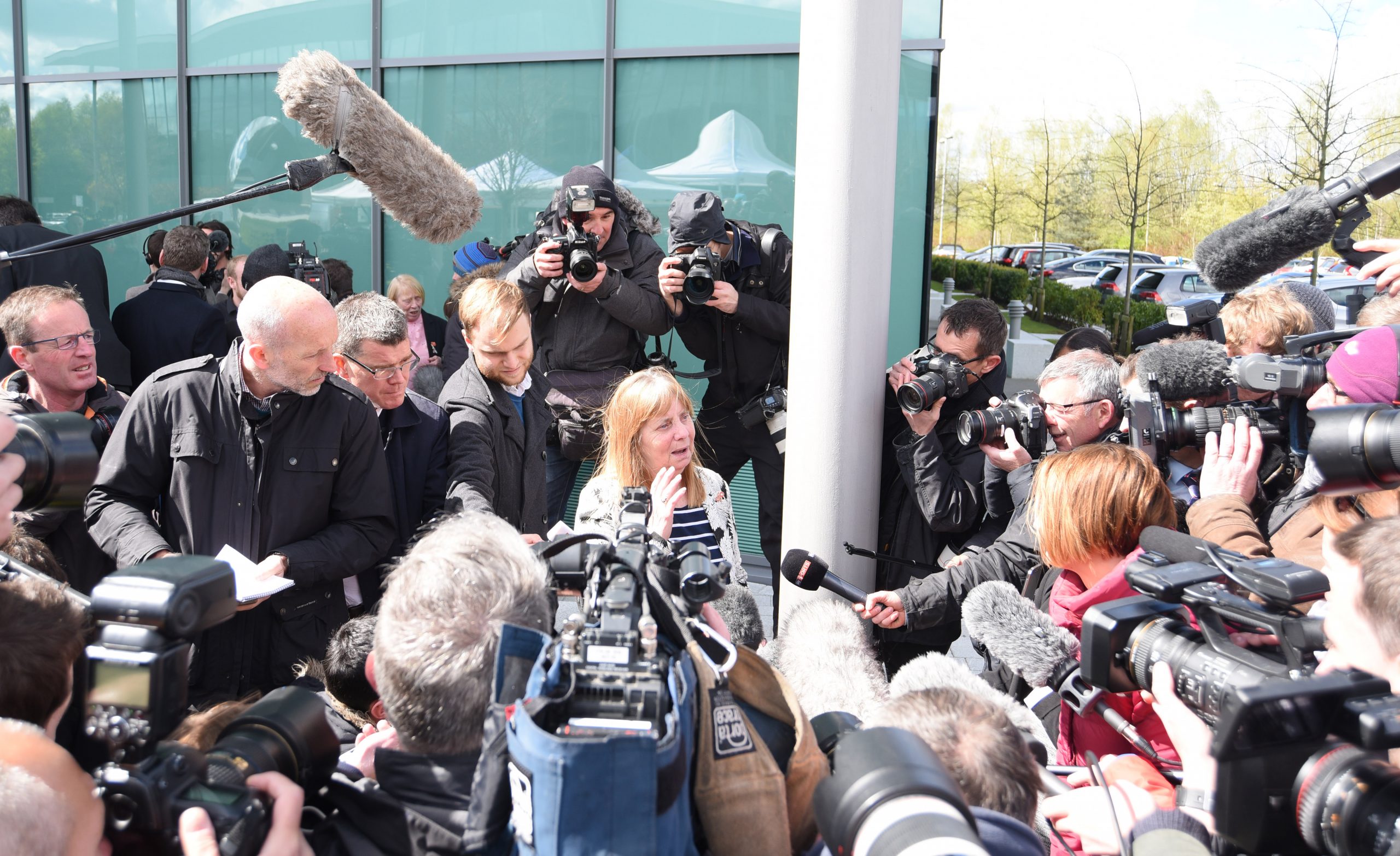
Margaret Aspinall greets the press after the conclusions last Tuesday. Pic © Paul Burrows
One owes respect to the living. To the dead one owes only the truth.
Voltaire
On Tuesday 26th April 2016 a Jury found that the 96 people who died in the crush in the Leppings Lane Terrace in the Hillsborough Stadium on 15th April 1989 were unlawfully killed.
The jury unanimously attributed blame to the police planning of and policing on the day; to failures in commanding officers’ response to the crushing outside the Leppings Lane turnstiles; to failures in the safety certificate and layout of the ground; to failures by Sheffield Wednesday Football Club during the planning of the match and to failures by the club’s consultant engineers. The jury also found that the emergency response from South Yorkshire Metropolitan Ambulance Service and South Yorkshire Police was slow and ineffective, causing or contributing to the deaths in the disaster.
Following question six (Are you satisfied, so that you are sure, that those who died in the disaster were unlawfully killed?), question seven was the most anxiously awaited and controversial, it asked whether fans’ behaviour on the day had caused or contributed to the disaster. With their unanimous verdict the jury laid to rest an issue which had repeatedly reared its ugly head; fans’ behaviour was not to blame for the disaster.
A city breathed a sigh of relief. The fact that those who had been there had always known to be true was now proven by a jury who had heard, and seen, two years’ worth of evidence from the longest Inquest in British legal history.
I grew up in Merseyside with this fight for truth and justice for the 96 going on in the background for most of my life. I also work as a case officer on the legal team for 22 of the families in the current inquests. I understand the anger and hurt that the slurs and lies have caused and I know that the conclusions from the current inquests have made Liverpudlians walk a little taller and feel a little lighter.
The anger and distrust fostered by the treatment of the families, the supporters and the city as a whole is likely to take more than these verdicts to heal. However the across the board vindication from a jury of our peers is surely a good place to begin picking apart the establishment and all its failings and building it up again in a fairer and more honourable form.
Shadow home secretary Andy Burnham called the families’ fight for the truth ‘the greatest miscarriage of justice of our times’. ‘But, finally, it is over. After 27 long years, this is real justice for the 96, their families and all Liverpool supporters,’ he said. ‘The survivors of this tragedy can finally be remembered for what they were on that day – the heroes of Hillsborough who tried to help their fellow fans.’
More on Hillsborough 
Brenda Campbell & Caoilfhionn Gallagher on the Hillsborough inquests (How the state failed the bereaved)
Mark George QC on Hillsborough (Why saying sorry isn’t enough) and the implications for Orgreave (‘Like Hillsborough, Orgreave cries out for justice’)
Chris Horrie from Proof magazine on the story behind The Sun’s notorious front cover (Telling the truth about the Scum)

Hillsborough families outside the inquests last Tuesday
How did we come to this?
On the day of the disaster a smear campaign against the fans began. South Yorkshire Police, with the help of some of the press, set out to tell a story in which drunken marauding fans stormed a gate and packed out a terrace and the police and ambulance service were left overwhelmed and actively prevented from carrying out their roles on the day.
Shortly after the disaster West Midlands Police took over the investigation. An independent, public inquiry was quickly convened to investigate the disaster and offer suggestions for preventing such deaths in the future. Lord Justice Taylor headed the inquiry, he received statements from witnesses, gathered by West Midlands Police, some of which we now know had been amended before their submission. His inquiry ran alongside the criminal investigations and he produced his final report in January 1990.
He was scathing of the police, finding that Match Commander David Duckenfield had ‘froze’. His report made recommendations on all-seater stadiums and the removal of pens/fencing which eventually became the norm. Taylor had laid the blame squarely with South Yorkshire Police; concluding that the fans, survivors, deceased were not to blame for the deaths. Though Taylor’s recommendations on stadium safety were widely accepted his findings regarding South Yorkshire Police and fans’ behaviour appear to have been actively ignored throughout the investigations which followed.
3:15pm cut-off
In April 1990 the inquests, run by Stefan Popper, began. Initially they also ran alongside the criminal investigations with evidence being heard for, on average, eight of the deceased each day. These mini-inquests heard details about each of the dead which included their blood alcohol levels at the time of death, whether they had been drinking or not.
In August 1990 the Director for Public Prosecutions (DPP) announced that no criminal charges would be brought.
The resumed inquests began in September 1990, crucially Popper had now ruled that no evidence would be heard regarding events after 3:15pm. The seemingly arbitrary cut-off was imposed based on Popper’s now discredited belief that all of the 95 dead had died of traumatic asphyxia and had received the injuries which caused their death by 3:15pm. The jury’s verdict, based upon only part of the evidence of the day, was accidental death.
Later in 1991 evidence was revealed to family members that showed that some of the victims had been alive after 3:15pm. The families of five of the deceased appealed to the Attorney General to quash the original inquests and allow new inquests to take place. This request was refused as being ‘not in the interests of justice’.
However in 1993 a judicial review of the decision was heard giving the families renewed hope, dishearteningly the court upheld the Attorney General’s original decision.
Alongside the criminal and legal battles a number of families and survivors sought civil remedies. The cases were run by 141 Merseyside law firms led by the Hillsborough Steering Committee. As a result of the committee’s work many survivors and families received compensation payments, agreed out of court.
The payments were however very low, averaging at between £1,000 and £3,500 and the out of court settlements meant that South Yorkshire Police’s admissions of liability were made privately rather than on record in a court of law. The unfairness of these awards was emphasised when documents were released to the Hillsborough Independent Panel which showed that in 1996 awards amounting to £1.2million were paid out to 14 officers on duty that day as compensation for their psychological injuries.
In 1994 Anne Williams, whose 15 year old son Kevin had died at Hillsborough, had found evidence which suggested he was still alive at 4pm. She contacted TV companies with the evidence and as a result The Cook Report was aired. Later that year this led to a debate in Parliament specifically regarding the evidence of officers from South Yorkshire Police who said Kevin was alive and well long after 3:30pm and who also said their statements had been changed following pressure from West Midlands Police. She again applied to the Attorney General and again received the reply that to quash the inquests’ verdict was not ‘in the interests of justice’.

Vincent Fitzsimmons’ sister, Dr Dorothy Griffiths at the press conference last Tuesday. Photo: Sheddie Broddle
‘Justice for the 96’
Following Jimmy McGovern’s docu-drama Hillsborough airing in December 1996 Hillsborough was back in the public’s consciousness and issues were raised regarding new evidence, including the fact that a CCTV tape of the day had ‘disappeared’. The new Labour government brought hope to the campaigners. Letters released by the Hillsborough Independent Panel though show that in reality the then Home Secretary Jack Straw acted due to his realisation that if he did not consider the new evidence there was a chance that the families would seek to launch a private prosecution against the match commanders. The letters also show that Straw believed there was nothing to warrant a new inquiry; he however formed the opinion that ‘continuing public concern will not be allayed with a reassurance from the Home Office that there is no new evidence’.
As a result, he announced a judge-led scrutiny of the new evidence which he hoped would secure public confidence. In June 1997 Lord Justice Stuart-Smith convened his ‘scrutiny’ panel. In February 1998 he reported that there was no evidence which warranted consideration by the Director of Public Prosecutions, no basis for establishing a new inquiry nor for quashing the verdict of the original inquest. The conclusions of the scrutiny were announced and Straw refused to re-open any public inquiry in February 1998. The families were disheartened and let-down, the Labour government had also shown itself unable to be either fully transparent or to hold the British establishment to account.
In August 1998 the Hillsborough Family Support Group (HFSG) began private prosecutions against match commanders David Duckenfield and Bernard Murray. The defendants applied to the High Court for a judicial review of the decision to allow the trial to go ahead arguing it would be unreasonable and unlawful to allow the trial to continue and asking the DPP to intervene and discontinue the prosecution. This request was refused, however the court did advise that South Yorkshire Police could meet the costs of the defence and HFSG must contribute to the costs of the case.
The trial began in June 2000, an even earlier cut-off of 3:06pm was imposed. Justice Hooper presided, despite having acted as an advisor to the CPS regarding the initial Hillsborough investigations. The charge was manslaughter. The defence ran the familiar arguments that fans were drunk and ticketless arriving close to kick-off in large numbers. The trial lasted for six weeks, after eight days of deliberation the jury acquitted Murray but were unable to reach a decision on Duckenfield. The Hillsborough Justice Campaign (HJC) group wrote: ‘The trial at Leeds was a show trial.’
Anne Williams had a third request for new inquests refused by the Attorney General in 2006. Later that year she took her case to the European Court of Human Rights. In 2009 she was given the decision that her claim was made out of time and so could not be heard.
At the 20th anniversary event of 2009, held at Anfield, Andy Burnham found himself heckled by fans, supporters and survivors. Encouraged by a singular shout of ‘Justice for the 96’ the Kop followed suit soon drowning out Burnham completely.
The incident showed emotions were still raw and the search for the truth continued. It was this moment which finally spurred Burnham into action. Along with MP Maria Eagle, who had long been working with the families as a constituency MP, he requested that the Labour government re-examined the events of the day and the actions that followed.

Families and supporter wait outside the inquests last week
Hillsborough Independent Panel (HIP)
The HIP was established on 15th December 2009. In 2011 the now Home Secretary Theresa May announced her intentions to release in full all information relating to the disaster. In September 2012, the HIP report was published. It found that Liverpool fans had not caused or contributed to the disaster, that a swifter response by the authorities could have saved the lives of up to 41 of the victims and that there had been a concerted and contrived attempt by South Yorkshire Police to divert blame from themselves and on to the fans.
Immediately after the report was published Anne Williams and her lawyers, including Elkan Abrahamson and Pete Weatherby QC wrote to the Attorney General asking that he quash the accidental death verdict and order new inquests during which the discredited cut-off time of 3:15pm would not be used. They also sent official complaints about the revelations to both the IPCC and the DPP asking them to investigate a number of criminal allegations, including manslaughter and perverting the course of justice.
The Attorney General Dominic Grieve applied to the High Court to have the original inquests’ verdicts quashed. His application was allowed and new inquests were ordered. On the same day criminal investigations began.
The Inquests opened with heart-breaking pen portraits of each of the dead in March 2014. Unfortunately the hearings which were intended to be inquisitorial were fought on the same adversarial ground as before. The legal teams representing the Match Commanders, South Yorkshire Police and the South Yorkshire Metropolitan Ambulance Service (now Yorkshire Ambulance Service) shamefully sought again to elicit evidence of drunken fans, arriving late and ticketless.
Lord Justice Goldring began his summing up in January 2016. The jury went out for almost three weeks to consider the 14 point questionnaire which had been agreed by all interested parties. On 26th April they returned unanimous answers for Questions 1-5 and 7-14. The only question on which they had to reach a majority verdict (of 7-2) was the question regarding unlawful killing.
The families felt relieved and vindicated. I cannot begin to describe the atmosphere in the court that day as the verdicts were read. However amongst the smiles and tears of joy there was still that sense of the families having been let down by the system, of having been put through 27 years of hell in order to get to a conclusion so similar to that which was reached by Taylor in his original Report. The jury also showed how damaging Popper’s 3:15pm cut-off had been as all but one of the deceased were found to have died within a time bracket which ended after 3:15pm.

Photo: Sheddie Broddle
So what now?
For the families these conclusions do not bring their relatives back, nor do they mean that people will automatically be held accountable for what happened that day. The inquests did not answer questions regarding the possibility of a cover-up in the aftermath of the disaster; these things will now follow. We now must again rely on the mechanisms of the state to function correctly and in good time, the pressure for them to do so is great in order to, in some small way, make up for the mistakes made in the past. And in order to begin to rebuild public trust in the establishment.
Parliament praised the families’ tenacity and determination, a strange moment as the state celebrated the public’s ability to stand up to and overcome the stonewall of the state. The Home Secretary promised to take action as a result of the verdicts. She stated she will continue to fund the families’ legal costs in future proceedings and continue with the family forums which allow the families to receive updates from the Independent Police Complaints Commission (IPCC), the Crown Prosecution Service (CPS) and Operation Resolve (ORIT).
The Hillsborough Article 2 Reference Group which serves to protect the interests of the families during the criminal investigations will also reconvene. May said she intends to amend the law to prevent police officers escaping disciplinary action through retirement by implementing a 12 month period during which action can still be taken.
Burnham has called for her to go further than this – and I agree with him on. Twelve months would have had no positive effect in circumstances such as these and this reform will not go far enough in its present form. She also stated that she will now seriously consider other cases involving South Yorkshire Police such as Rotherham and Orgreave, this must now be done. May cannot be allowed to obfuscate in the way in which Straw did when he set up the Stuart-Smith Scrutiny, any move to look at the policing of these scandals, as well as others, must be robust and completely transparent.

Steve, brother of Michael Kelly, at last week’s press conference
Burnham called for the law governing inquests to be reformed calling for ‘equality of arms’ as in most cases families are forced to pay for legal representation themselves whilst facing the legal teams of well-funded public or private bodies. He also demanded that the process be inquisitorial and not adversarial. This is an extremely important issue which places the spotlight again on reforms and cuts coming from the Justice Department, Burnham, was right to draw attention to this aspect of the case.
The lawyers acting for the 22 families have written to May requesting that the implementation of remedial measures be considered for South Yorkshire Police. Elkan Abrahamson submitted that the way in which Chief Constable Crompton ran his defence at the current inquests was in opposition to the apologies he made both before and after through which he accepted SYP’s responsibility.
Following the verdicts the South Yorkshire Police Crime Commissioner, Alan Billings, seemed to bow to political pressure and suspended CC Crompton ‘with a heavy heart’. Crompton’s replacement was forced to step down a day later when it was made public that she had been under investigation by her previous force, Greater Manchester Police.
This debacle suggests that Billings is having great difficulty in finding somebody suitable to head the force at this difficult time. It also supports the calls for the Home secretary to investigate the force ‘root and branch’. The aim is to provide a thorough report to the Home Office allowing for an informed decision to then be made on what measures should be taken. South Yorkshire Police and its past and present employees have dragged their feet and prolonged proceedings, only adding to the grief and stress of the families and survivors with false arguments and their refusal to admit to their failings throughout the past 27 years. There have been calls as far back as 2014 for the force to be scrapped entirely in order to regain public trust, it may be that this suggestion will need to be reconsidered.
As Abrahamson stated: ‘The Force’s motto is “Justice with Courage” – sadly they have shown neither.’
The criminal investigations will necessarily continue. The CPS has confirmed that they will now formally consider criminal prosecutions. ORIT is the police team investigating the planning of the event and the events of the day. They believe they will be in a position to hand their conclusions over to the CPS by the end of 2016. Charges may be brought of gross negligence manslaughter, misconduct in a public office, perverting the course of justice and breaches of the Health and Safety at Work Act and Safety at Sports Grounds Act.
The IPCC are investigating the conduct of South Yorkshire Police and West Midlands Police after the disaster, charges could include conspiracy to pervert the course of justice, perverting the course of justice, perjury and misconduct in public office. They are also continuing to look into allegations that the families’ had been under surveillance by the police at various times throughout their campaign.
It is hoped that both investigations will be ready to hand over their recommendations to the CPS by the end of 2016. There have been a number of issues arising from the investigations by the IPCC and ORIT and they must now be kept in the spotlight. Disclosure of their statements and interview transcripts to interested parties to the inquest have now inevitably stopped, it will therefore be more difficult to hold these investigations to account. Following problems regarding the quality of the statements they produced, the interview techniques they employed and the spurious arguments they raised during the inquests (including regarding the order to open Gate C) it is clearly important that both bodies are at least monitored by the HA2RG and family forum. They must understand that their decisions will be scrutinised and their reasoning and methodology must be beyond reproach.
A period of self examination
There is also the possibility that, after the criminal investigations are complete, there will be civil claims brought against the bodies involved. The claims are likely to be based on misfeasance in public office. This will relate to the emotional and psychological harm caused by the promulgation and continuation of the lie that fans were to blame for the disaster as well as the harm caused by the cover up itself.
These verdicts should rock the foundations of the establishment, as Dominic Grieve said on Wednesday in Parliament: ‘All of us who work to protect the public need to go into a period of self- examination.’ These inquests and the HIP report have not only shown problems at the heart of South Yorkshire Police and South Yorkshire Ambulance Service but have shown problems running through the establishment’s core.
It may be that, beyond the relief and justification they have brought to the families, these verdicts also signify the beginnings of a seismic shift in the way in which all public bodies act and the way in which we, the public, are protected and answered to. It is up to us, as lawyers and as citizens, to ensure that we do not let up the pressure.
